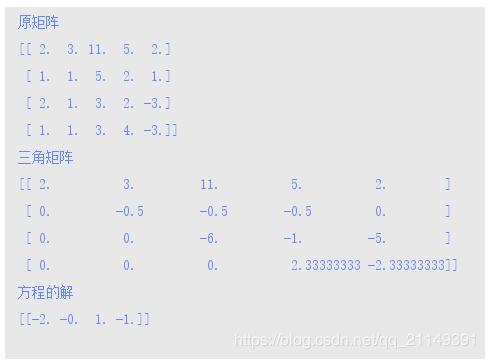python networkx 包绘制复杂网络关系图的实现
1. 创建一个图
import networkx as nx g = nx.Graph() g.clear() #将图上元素清空
所有的构建复杂网络图的操作基本都围绕这个g来执行。
2. 节点
节点的名字可以是任意数据类型的,添加一个节点是
g.add_node(1)
g.add_node("a")
g.add_node("spam")
添加一组节点,就是提前构建好了一个节点列表,将其一次性加进来,这跟后边加边的操作是具有一致性的。
g.add_nodes_from([2,3]) or a = [2,3] g.add_nodes_from(a)
这里需要值得注意的一点是,对于add_node加一个点来说,字符串是只添加了名字为整个字符串的节点。但是对于
add_nodes_from加一组点来说,字符串表示了添加了每一个字符都代表的多个节点,exp:
g.add_node("spam") #添加了一个名为spam的节点
g.add_nodes_from("spam") #添加了4个节点,名为s,p,a,m
g.nodes() #可以将以上5个节点打印出来看看
加一组从0开始的连续数字的节点
H = nx.path_graph(10) g.add_nodes_from(H) #将0~9加入了节点 #但请勿使用g.add_node(H)
删除节点
与添加节点同理
g.remove_node(node_name) g.remove_nodes_from(nodes_list)
3. 边
边是由对应节点的名字的元组组成,加一条边
g.add_edge(1,2) e = (2,3) g.add_edge(*e) #直接g.add_edge(e)数据类型不对,*是将元组中的元素取出
加一组边
g.add_edges_from([(1,2),(1,3)])
g.add_edges_from([("a","spam") , ("a",2)])
通过nx.path_graph(n)加一系列连续的边
n = 10 H = nx.path_graph(n) g.add_edges_from(H.edges()) #添加了0~1,1~2 ... n-2~n-1这样的n-1条连续的边
删除边
同理添加边的操作
g.remove_edge(edge) g.remove_edges_from(edges_list)
4. 查看图上点和边的信息
g.number_of_nodes() #查看点的数量
g.number_of_edges() #查看边的数量
g.nodes() #返回所有点的信息(list)
g.edges() #返回所有边的信息(list中每个元素是一个tuple)
g.neighbors(1) #所有与1这个点相连的点的信息以列表的形式返回
g[1] #查看所有与1相连的边的属性,格式输出:{0: {}, 2: {}} 表示1和0相连的边没有设置任何属性(也就是{}没有信息),同理1和2相连的边也没有任何属性
| method | explanation |
|---|---|
| Graph.has_node(n) | Return True if the graph contains the node n. |
| Graph.__contains__(n) | Return True if n is a node, False otherwise. |
| Graph.has_edge(u, v) | Return True if the edge (u,v) is in the graph. |
| Graph.order() | Return the number of nodes in the graph. |
| Graph.number_of_nodes() | Return the number of nodes in the graph. |
| Graph.__len__() | Return the number of nodes. |
| Graph.degree([nbunch, weight]) | Return the degree of a node or nodes. |
| Graph.degree_iter([nbunch, weight]) | Return an iterator for (node, degree). |
| Graph.size([weight]) | Return the number of edges. |
| Graph.number_of_edges([u, v]) | Return the number of edges between two nodes. |
| Graph.nodes_with_selfloops() | Return a list of nodes with self loops. |
| Graph.selfloop_edges([data, default]) | Return a list of selfloop edges. |
| Graph.number_of_selfloops() | Return the number of selfloop edges. |
5. 图的属性设置
为图赋予初始属性
g = nx.Graph(day="Monday")
g.graph # {'day': 'Monday'}
修改图的属性
g.graph['day'] = 'Tuesday'
g.graph # {'day': 'Tuesday'}
6. 点的属性设置
g.add_node('benz', money=10000, fuel="1.5L")
print g.node['benz'] # {'fuel': '1.5L', 'money': 10000}
print g.node['benz']['money'] # 10000
print g.nodes(data=True) # data默认false就是不输出属性信息,修改为true,会将节点名字和属性信息一起输出
7. 边的属性设置
通过上文中对g[1]的介绍可知边的属性在{}中显示出来,我们可以根据这个秀改变的属性
g.clear()
n = 10
H = nx.path_graph(n)
g.add_nodes_from(H)
g.add_edges_from(H.edges())
g[1][2]['color'] = 'blue'
g.add_edge(1, 2, weight=4.7)
g.add_edges_from([(3,4),(4,5)], color='red')
g.add_edges_from([(1,2,{'color':'blue'}), (2,3,{'weight':8})])
g[1][2]['weight'] = 4.7
g.edge[1][2]['weight'] = 4
8. 不同类型的图(有向图Directed graphs , 重边图 Multigraphs)
Directed graphs
DG = nx.DiGraph() DG.add_weighted_edges_from([(1,2,0.5), (3,1,0.75), (1,4,0.3)]) # 添加带权值的边 print DG.out_degree(1) # 打印结果:2 表示:找到1的出度 print DG.out_degree(1, weight='weight') # 打印结果:0.8 表示:从1出去的边的权值和,这里权值是以weight属性值作为标准,如果你有一个money属性,那么也可以修改为weight='money',那么结果就是对money求和了 print DG.successors(1) # [2,4] 表示1的后继节点有2和4 print DG.predecessors(1) # [3] 表示只有一个节点3有指向1的连边
Multigraphs
简答从字面上理解就是这种复杂网络图允许你相同节点之间允许出现重边
MG=nx.MultiGraph()
MG.add_weighted_edges_from([(1,2,.5), (1,2,.75), (2,3,.5)])
print MG.degree(weight='weight') # {1: 1.25, 2: 1.75, 3: 0.5}
GG=nx.Graph()
for n,nbrs in MG.adjacency_iter():
for nbr,edict in nbrs.items():
minvalue=min([d['weight'] for d in edict.values()])
GG.add_edge(n,nbr, weight = minvalue)
print nx.shortest_path(GG,1,3) # [1, 2, 3]
9. 图的遍历
g = nx.Graph()
g.add_weighted_edges_from([(1,2,0.125),(1,3,0.75),(2,4,1.2),(3,4,0.375)])
for n,nbrs in g.adjacency_iter(): #n表示每一个起始点,nbrs是一个字典,字典中的每一个元素包含了这个起始点连接的点和这两个点连边对应的属性
print n, nbrs
for nbr,eattr in nbrs.items():
# nbr表示跟n连接的点,eattr表示这两个点连边的属性集合,这里只设置了weight,如果你还设置了color,那么就可以通过eattr['color']访问到对应的color元素
data=eattr['weight']
if data<0.5: print('(%d, %d, %.3f)' % (n,nbr,data))
10. 图生成和图上的一些操作
下方的这些操作都是在networkx包内的方法
subgraph(G, nbunch) - induce subgraph of G on nodes in nbunch union(G1,G2) - graph union disjoint_union(G1,G2) - graph union assuming all nodes are different cartesian_product(G1,G2) - return Cartesian product graph compose(G1,G2) - combine graphs identifying nodes common to both complement(G) - graph complement create_empty_copy(G) - return an empty copy of the same graph class convert_to_undirected(G) - return an undirected representation of G convert_to_directed(G) - return a directed representation of G
11. 图上分析
g = nx.Graph()
g.add_edges_from([(1,2), (1,3)])
g.add_node("spam")
nx.connected_components(g) # [[1, 2, 3], ['spam']] 表示返回g上的不同连通块
sorted(nx.degree(g).values())
通过构建权值图,可以直接快速利用dijkstra_path()接口计算最短路程
>>> G=nx.Graph()
>>> e=[('a','b',0.3),('b','c',0.9),('a','c',0.5),('c','d',1.2)]
>>> G.add_weighted_edges_from(e)
>>> print(nx.dijkstra_path(G,'a','d'))
['a', 'c', 'd']
12. 图的绘制
下面是4种图的构造方法,选择其中一个
nx.draw(g) nx.draw_random(g) #点随机分布 nx.draw_circular(g) #点的分布形成一个环 nx.draw_spectral(g)
最后将图形表现出来
import matplotlib.pyplot as plt plt.show()
将图片保存到下来
nx.draw(g)
plt.savefig("path.png")
修改节点颜色,边的颜色
g = nx.cubical_graph() nx.draw(g, pos=nx.spectral_layout(g), nodecolor='r', edge_color='b') plt.show()
13. 图形种类的选择
| Graph Type | NetworkX Class |
|---|---|
| 简单无向图 | Graph() |
| 简单有向图 | DiGraph() |
| 有自环 | Grap(),DiGraph() |
| 有重边 | MultiGraph(), MultiDiGraph() |
reference:https://networkx.github.io/documentation/networkx-1.10/reference/classes.html
以上就是本文的全部内容,希望对大家的学习有所帮助,也希望大家多多支持【听图阁-专注于Python设计】。


